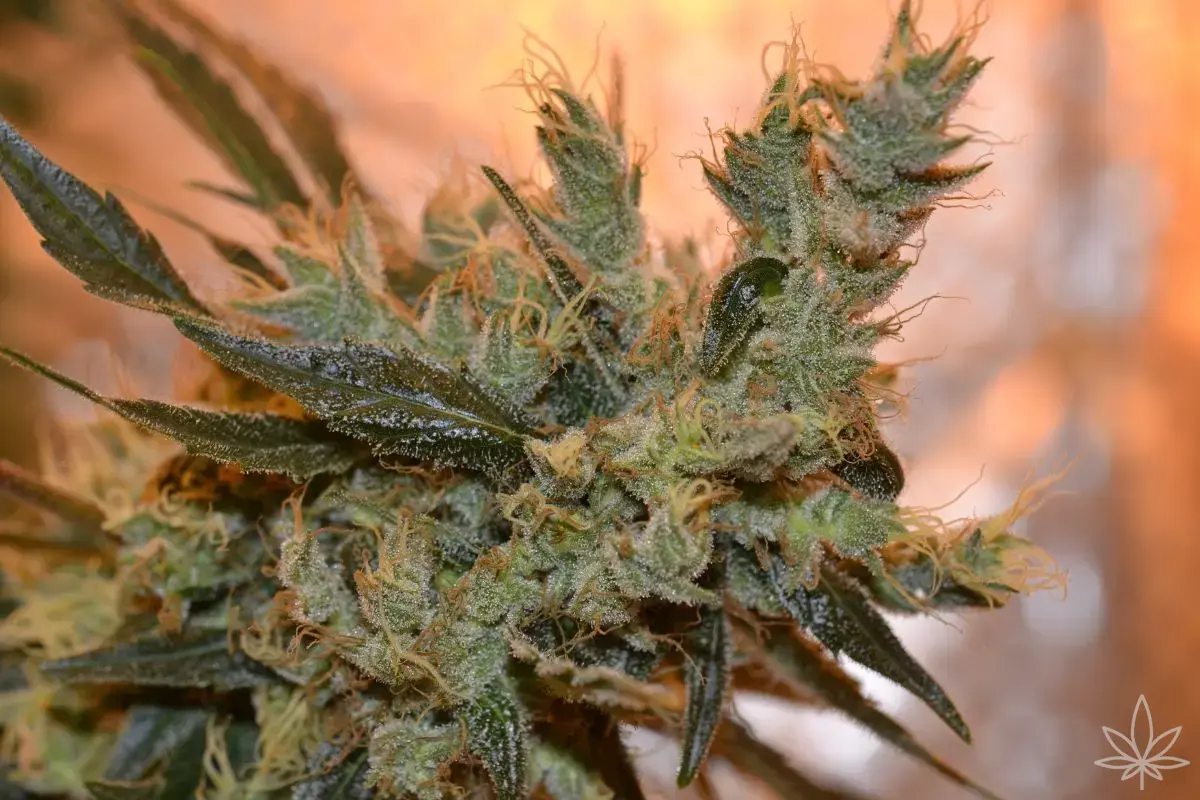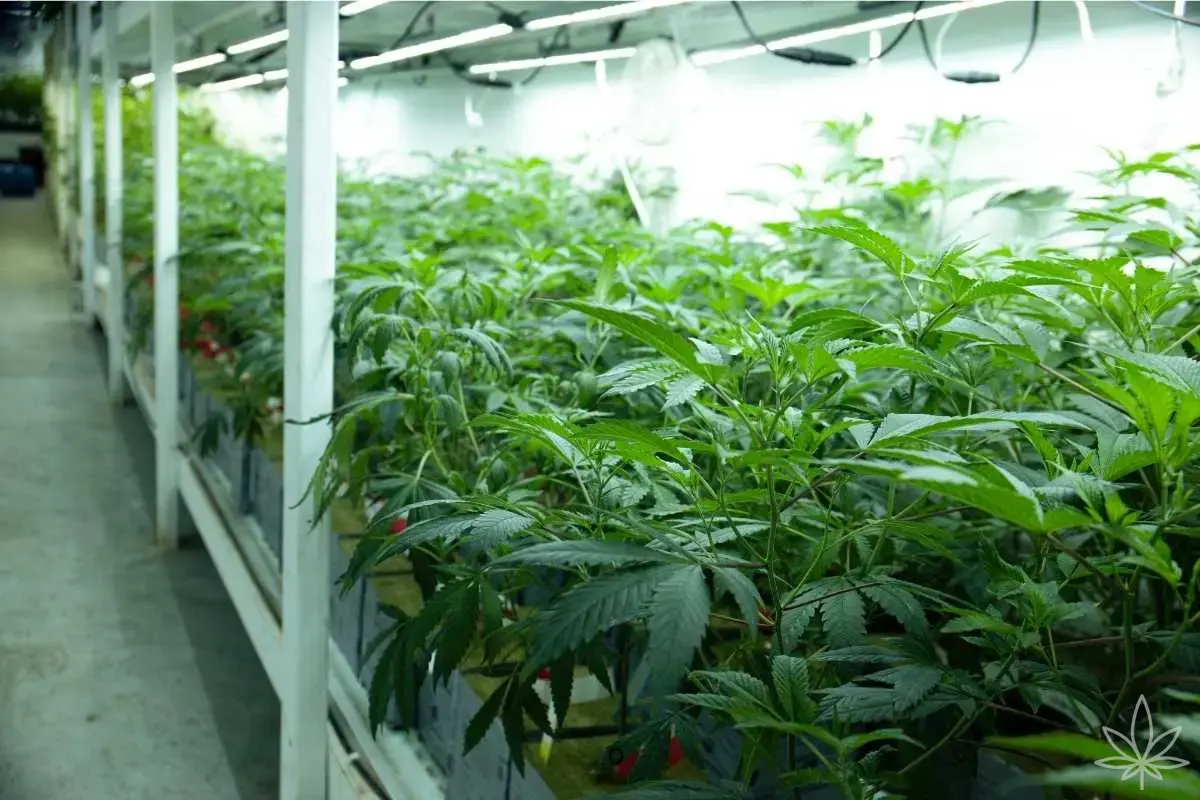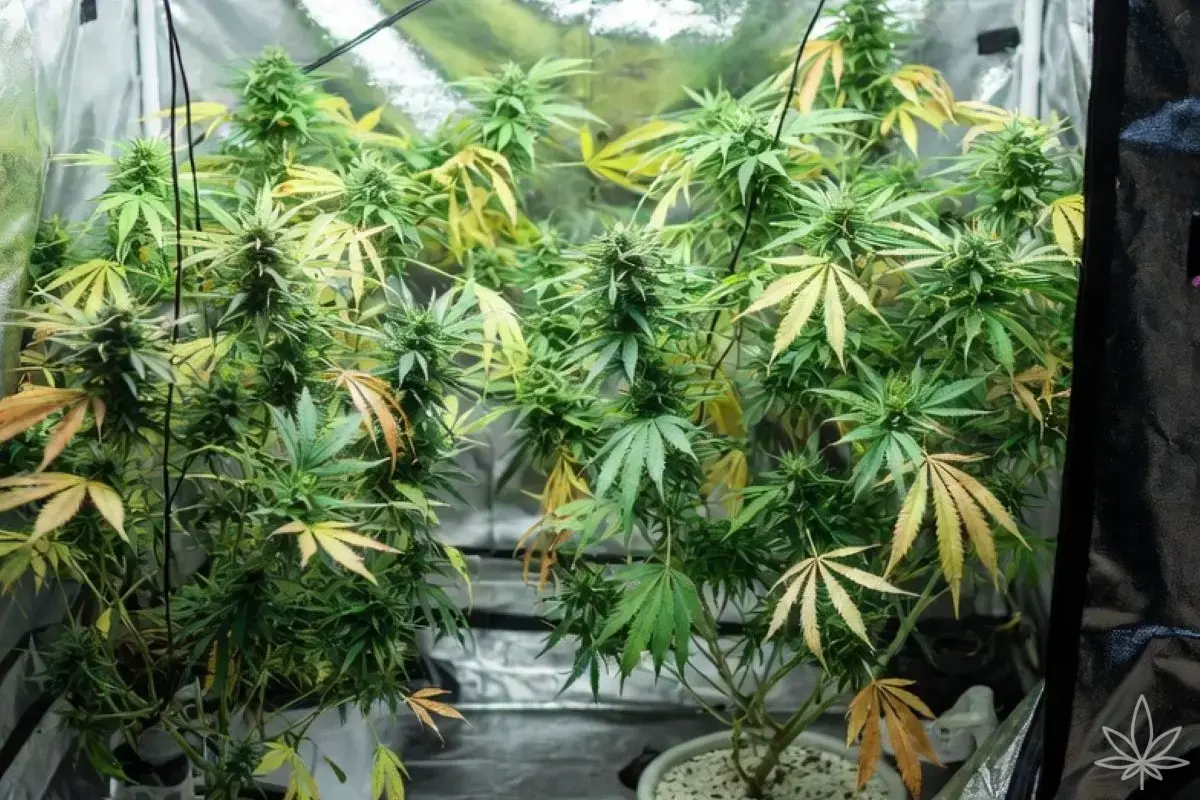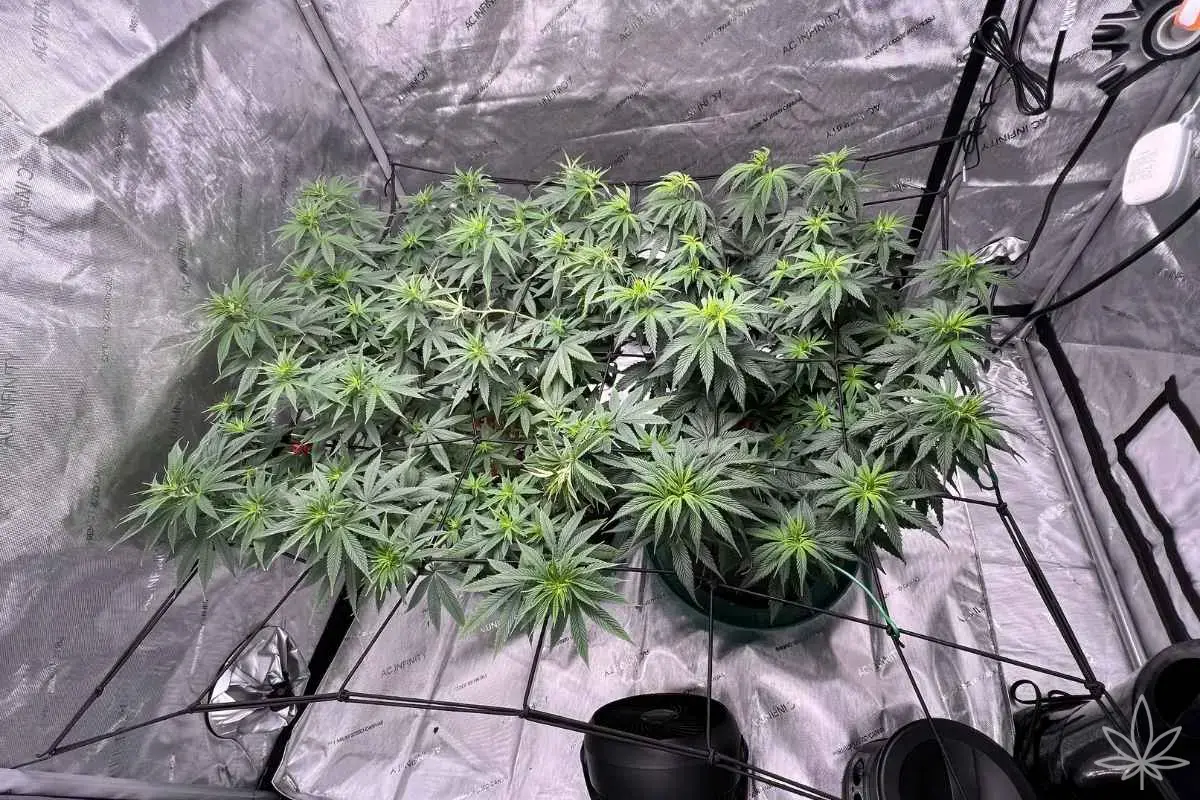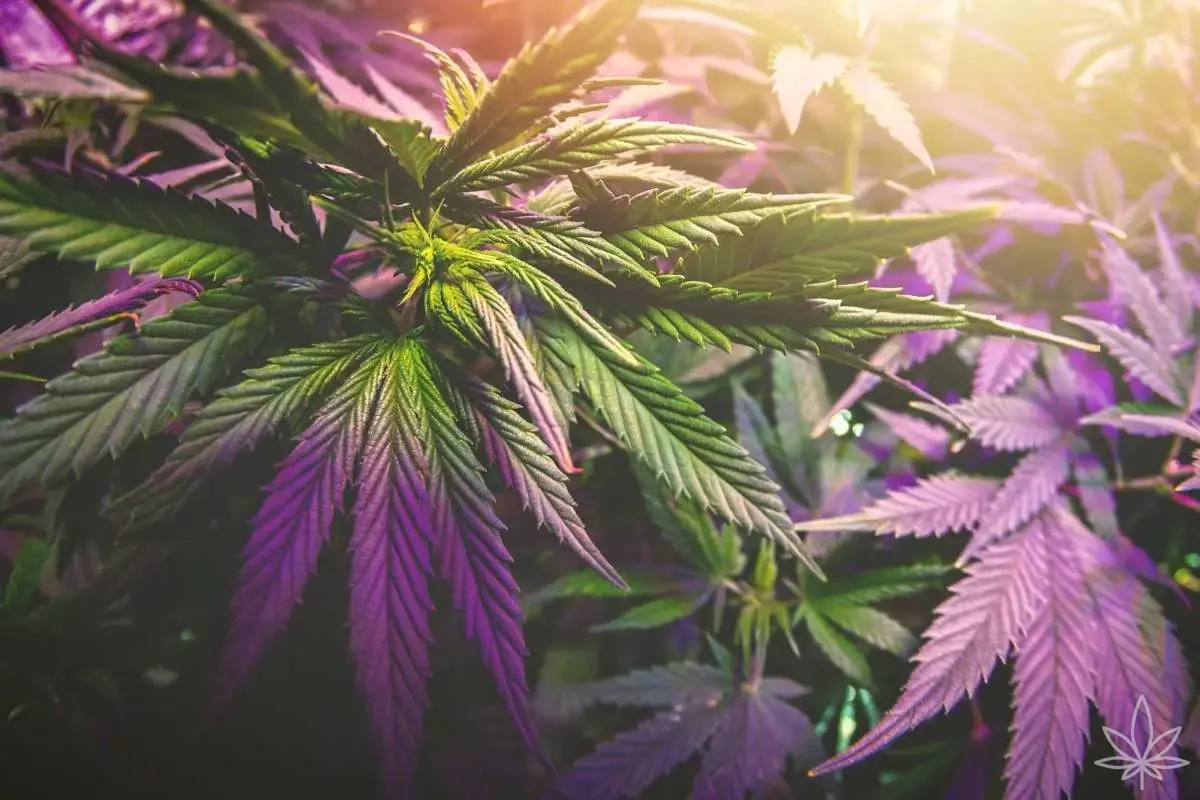There are moments you look at your buds and think: “Are they… growing spikes?” Breathe. Foxtailing can be a sign of trouble (over-lighting, overheating) or simply a genetic trait — especially in sativa-leaning lines that love little “turrets” of calyxes. The craft is telling stress foxtailing from genetic foxtailing — and if it’s the first one, stopping it within 24–48 hours before density, flavor and your nerves take a hit.
What is foxtailing, anyway?
Picture a flower that doesn’t finish packing into a dense cone but keeps adding narrow, spiraled strings of fresh calyxes — like mini-towers. Sometimes it’s exotic and photogenic (genetic), sometimes it’s the plant trying to escape harsh light (stress). The difference is subtle… until you do two things: measure light/leaf temperature and notice where it starts.
Two main causes of problematic foxtailing
1) Over-lighting (too many photons to the tips)
When PPFD at the tops climbs to 900–1100 µmol/m²/swithout added CO₂, plants often switch from “packing” to running upward. It’s common under panels with a hot center or with too little distance. If DLI also exceeds ~45 mol/day (no CO₂), you’ve got a recipe for foxtails.
What to check: grid PPFD (center + four corners) and the average. If tips live in the top range and you also see bleaching — that’s it.
2) Overheating (leaf too hot)
Plants don’t read the wall thermometer; they read their own leaf. When leaf temp in flower tops ~28–30 °C (at typical VPD), photosynthesis proteins take a beating and buds grow “spikes.” Often just 2–3 °C too much at the tops kicks off carving.
What to check: an IR thermometer (€15–25) or a probe near the tops. If you have islands of 29–31 °C in the canopy and foxtails under them — bingo.
Genetic vs. stress foxtailing — how to tell
- Where does it grow?
Genetic: fairly evenly across the bud, including in half-shade; adds “texture,” not just under lamp center.
Stress:localized hotspots, usually under the center or where warm air hits. - What do leaves say?
Genetic: surrounding leaves are relaxed, no taco, no bleaching.
Stress: often taco edges, photobleach on tips, dry “papery” feel. - Does a change help?
Genetic:raising/dimming barely changes shape — it keeps its style.
Stress:48 h after distance/power correction, new growth returns to normal “packing.”
Harvest rule: with foxtails, ignore pistils — fresh “towers” keep pushing hairs forever. Judge trichomes (heads: milky/amber) on the older mass of the bud.
“Stop Foxtails” — a simple 24–48 h protocol
- Kill hotspots with numbers
- Measure PPFD on a 5-point grid and compute DLI: PPFD × seconds / 1,000,000.
- > ~45 mol/day without CO₂ or sustained >900 µmol at tips = a lot.
- Mechanical move first: flatten and back off
- Raise the light 5–8 cm or spread bars (on bar fixtures).
- Level the canopy (gentle defol, ties) so edges get more and center less.
- Electrical move: smart dimming
- –10–20% on the dimmer and aim the average PPFD in flower for 700–900 µmol.
- If edges underperform, raise distance (less hotspot, more uniformity) rather than cranking watts.
- Cool the tops, not the whole tent
- Move air along the canopy, not into the buds.
- If leaf T > 28–30 °C, increase exhaust, raise the fixture, bring in cooler intake air.
- In hot season: portable AC (€200–400) or water-cooled LED loop if you have it.
- Wait 48 h — judge only new growth
- Old “spikes” remain — you won’t un-carve them.
- If new towers stop forming, you’ve won. If not, repeat steps 2–4 (another +5 cm and/or –10%).
Common “look-alikes” that mimic foxtails
- Overheating at night (+ high RH): poor respiration, fresh strings in the morning.
- Light leaks late in flower: circadian wobble — odd re-veg at tips mistaken for foxtails.
- Too hot a feed at the end: some cultivars “puff into threads” at high EC instead of packing density. Keep runoff in check — don’t confuse with K deficiency.
When foxtails are “just the look” — and you should let them be
Some cultivars (old Hazes, Thai sativas, some dessert hybrids) naturally build turrets. Light is fine, leaves are happy, smell and resin are ace. Don’t try to “straighten” those buds — focus on stable climate and trichome maturity. Mild genetic foxtails can even add surface area for resin and aroma.
End-of-flower “safety” ranges (no CO₂)
- PPFD at tops:700–900 µmol/m²/s (average, not peak).
- DLI:30–45 mol/m²/day.
- Leaf T (IR):24–28 °C (brief 29–30 °C spikes are OK, not continuous).
- VPD (at 24–27 °C air):1.2–1.5 kPa — too dry raises leaf T, too wet chokes respiration.
- Air movement: around the canopy, not into the tops.
Gear that actually helps (no arms race)
- IR thermometer for leaf temp: €15–25.
- Ratchet hangers for fine height control: €8–15.
- Inline fan upgrade (quiet, controllable): €60–120.
- PPFD app + paper diffuser or simple lux meter: €0–20.
Tent FAQ
“Dim or raise?”
Raise/spread first — it improves uniformity. Add dimming once the whole surface reads sensibly.
“Trim foxtails?”
No need. Old spikes stay, but if you stop new ones, quality is saved. For harvest timing trichomes > pistils.
“Will CO₂ help?”
With CO₂ (800–1200 ppm) plants tolerate 900–1100 µmol calmly — only with dialed VPD and feeding. For most home grows: first climate & distance, then consider CO₂.
TL;DR — foxtails in three lines
If foxtails appear only under hotspots and leaves taco/bleach — it’s light/heat stress: +5–8 cm, –10–20%, cool tops. If they grow evenly and plants are happy — it’s genetics, don’t fix. Always harvest by trichomes, not hairs — fresh towers keep lying to calendars.

